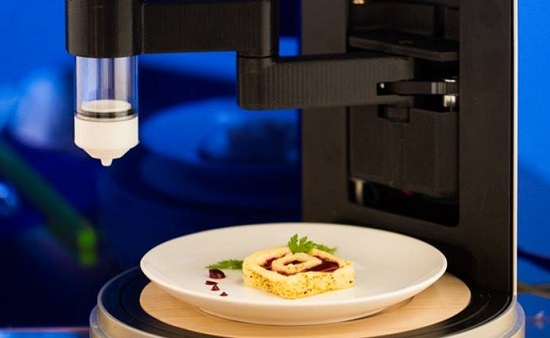 3D printers can be found in a variety of industries, from consumer goods to health sciences and more. Incorporating a 3D printer into a process enables individuals to easily construct objects that would regularly be difficult or even impossible to create by hand. A team at Columbia University (CU), led by Hod Lipson, has recently created a 3D printer prototype for the culinary industry, creating decorative, ready-to-eat meals at the push of a button.
3D printers can be found in a variety of industries, from consumer goods to health sciences and more. Incorporating a 3D printer into a process enables individuals to easily construct objects that would regularly be difficult or even impossible to create by hand. A team at Columbia University (CU), led by Hod Lipson, has recently created a 3D printer prototype for the culinary industry, creating decorative, ready-to-eat meals at the push of a button.
Although food-constructing printers such as Foodini and ChefJet have been invented in the past, they allow for very few variations and can only produce cold or raw products. CU’s new printer model cooks the food as it is printing, eliminating the need of cooking or baking it afterwards.
The prototype uses a combination of pastes, gels, powders, and liquids stored in tubes, which are dispensed onto the plate below. Computer software then prints a 3-dimensional uploaded design by creating multiple layers on top of one another. This software is easy enough to use that it doesn’t require someone with engineering expertise to create a digital recipe.
The 3D food printer is not meant to replace traditional cooking methods when preparing meals, but rather allow for an easy solution to create quick fresh food on demand when needed. Using the new printer would allow individuals to easily prepare meals at the press of a button and manage their dietary restrictions by knowing each separate ingredient.
Dispensing devices, similar to the 3D food printer, must be reliable and accurate in their operations to administer the precise amount of substance each time. Eclipse offers various dispensing methods, including epoxy potting materials and lubricants and adhesives, which will provide a precise repetitive dispensing solution to improve the accuracy and quality of your products.
Source: NewAtlas
